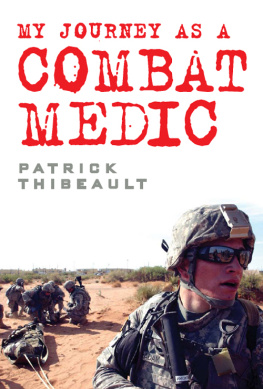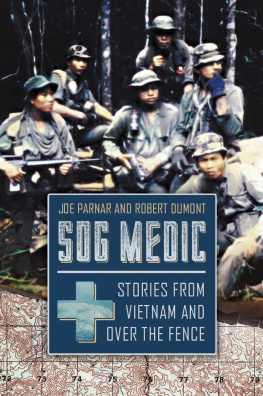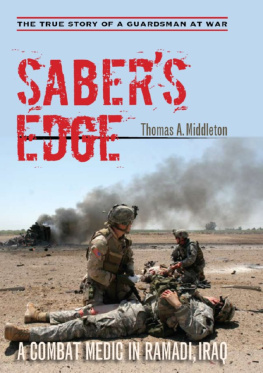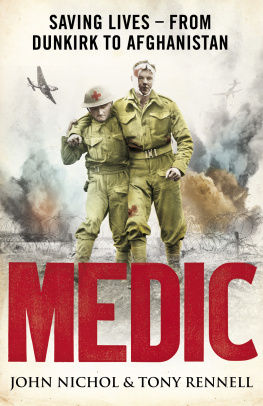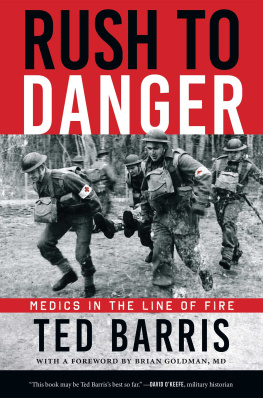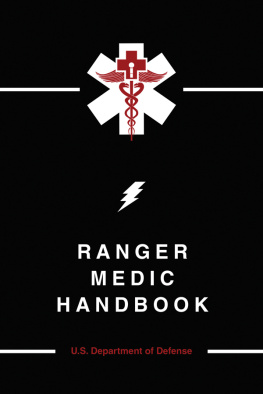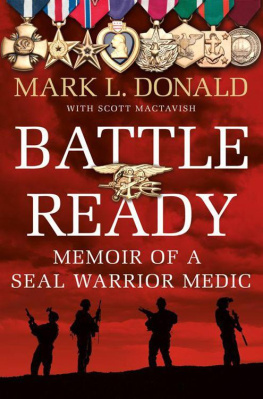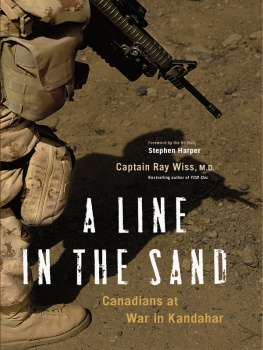My Journey as a Combat Medic
From Desert Storm to Operation Enduring Freedom
Patrick Thibeault
This book is dedicated to the men and women of the armed forces that serve to heal everywhere.
CONTENTS
INTRODUCTION
My Journey as a Combat Medic is the true story of one medic who served in several different wars. The author served in the active Army and the Army National Guard, during training missions overseas and also during combat operations. It is the story of one who started out as a wet-behind-the-ears, nave medic and evolved into a well-seasoned, hardened combat veteran. This book is not about tactics of war, nor does it glorify the horrors of war. Quite the opposite: it is a celebration of life and humanity, as the combat medic is one of a few people who brings compassion and humanity to the field of battle.
The author served with the elite and well-storied 160th Special Operations Aviation Regiment (Airborne) in the capacity of a special operations flight medic. This position included aviation operations and paratrooper operations, as well as the routine medical operations that an Army medic encounters. The author deployed to Operations Desert Shield and Desert Storm and fought with the 160th during that time of war.
The book details what it was like having served again at war as an older, more seasoned soldier this time with an Army National Guard unit, the 76th Infantry Brigade. The author deployed to Afghanistan in 2004-05 in support of Operation Enduring Freedom. The author describes many issues that other military reserve members must overcome and the wearing of two hats that of the civilian career and the military career.
Most books written as memoirs cover important events in a chronological manner. This book is different: the author writes about his journey based on similar events. Each chapter covers a specific component of what made the authors journey so special; for example, in the first chapter the author writes about the thrills and consequences of jumping out of perfectly good airplanes. Many soldiers both in the active military and the reserve services are often exposed to traumatic experiences in the realm of combat and, as a result, suffer from post-traumatic stress disorder. The author writes about how he has dealt with this disorder and his homecoming. The book is not only about combat operations, but also the training that soldiers go through to become a medic in the US Army.
THEY SAY THAT IN THE ARMY
Oh, the coffee in the Army, they say its mighty fine,
It looks like muddy water and tastes like turpentine.
(Chorus) Oh, no! Dont want no more of Army life, Gee, Mom, I wanna go home!
Oh the food in the Army, they say its mighty fine,
A chicken got off the table and started marking time. (Chorus)
And the biscuits in the Army, they say theyre mighty fine,
One jumped off the mess tray and killed a friend of mine. (Chorus)
The women in the army, they say theyre mighty fine,
They look like Phyllis Diller and march like Frankenstein.
(Final Chorus) Oh, no! Dont want no more of Army life, Gee, Mom, I wanna go, But they wont let me go, Gee, Mom, I wanna go home!
CHAPTER 1: AIRBORNE, ALL THE WAY
The jumpmaster yelled the order out: Get ready! I looked around at the other Airborne paratrooper students; by the look in their eyes I could tell they were as scared as I was. The jumpmaster then yelled, Outboard personnel, stand up! This was my cue to stand. Now or never. It was hard to stand with the parachute on and the turbulence from the airplane. Salty sweat burned my eyes. Adrenaline started to flow in me, and my legs trembled. I was getting a little bit nervous. The next order given was Hook up. I hooked my parachute static line to the metal wire going down the length of the airplane. My heart pounding, I was beginning to wonder if I had made the right decision in joining the Airborne. It wasnt too late to back out; nobody would say anything, and no one would even remember me. I thought about the past two weeks of hard training and running at Airborne School. No, I was going to go through with it.
We approached the drop zone. My stomach was tied in knots. The next command was Check static lines. The static line is the cord that comes out of the parachute and that I had hooked to the plane. The jumpmaster yelled, Check equipment! I half-heartedly checked my equipment. If something was wrong with my parachute, I would not have known it anyway. I also felt my reserve parachute; it was still there. I made sure not to accidentally pull the reserve ripcord while I was in the plane, as, if I had pulled the reserve parachute, everyone in front of me would have to quickly jump out of the airplane, with the static line hooked up or not. We had to always keep our hand covering the reserve ripcord and pull it just in case the main parachute didnt open up once we were outside of the plane. I looked at the soldiers parachute in front of me. I couldnt tell if there was anything wrong with it; it looked just like mine. I wondered if anyone else in the plane felt like quitting at the last minute. The jumpmaster yelled, Sound off for equipment check! The last soldier in our chalk of jumpers smacked the soldier in front of him and yelled, OK. One after another, we all slapped the person in front of us on the hip. The soldier in front of the chalk yelled and pointed to the jumpmaster, saying, All OK, jumpmaster!
All was OK; I was in my third week of Airborne School, just about to make my first parachute jump from an airplane. I had just graduated from advanced individual training (AIT) to be an Army medic and soon I would be an Airborne paratrooper medic. As I shook, struggling to maintain my balance, this thought put a smile on my face. The jumpmaster grabbed hold of the first soldier in our chalk and put him in the door of the airplane. I was glad that I was not first in the chalk on my first jump. The jumpmaster yelled, Stand by! Behind the cockpit, the green light came on, meaning it was time to release the jumpers. The last command the jumpmaster yelled was Go!
We all shuffled to the door as we had been taught. For a second I hesitated at the door, before jumping out of the plane and seeing the ground below me. I was quickly jolted upward as my parachute opened. We were taught to count after jumping out of the plane: one thousand, two thousand, three thousand, four thousand. If the main parachute didnt open up after those four seconds, we were supposed to pull our reserve parachute. I was uttering something, but it wasnt numbers. First I heard the deafening roar of the airplane engines and everyone screaming, and then a peaceful silence. It was serene. I held tightly to my parachute and looked around at the earth and all its beauty. It was a nice day in late March, 1990.
We jumped about 1,200 feet from the ground, so it was not too high, but more than enough to get a thrill. I looked around at the jumpers in my chalk; everyones parachute had opened. Well, I did it; I made my first jump out of an airplane. I was slowly falling towards the ground. As I came about tree top level, I started doing the parachute landing fall. I hope this doesnt hurt, I thought to myself. Training took over; I landed on my left side and kicked my body over. A paratrooper is taught to land in a certain way so none of the pressure of landing goes to the back. I stayed on the ground for a minute to relish what I had just done. I stood up, invigorated. As I turned in my parachute I had a big smile on my face. Four jumps to go and I will earn my jump wings.

